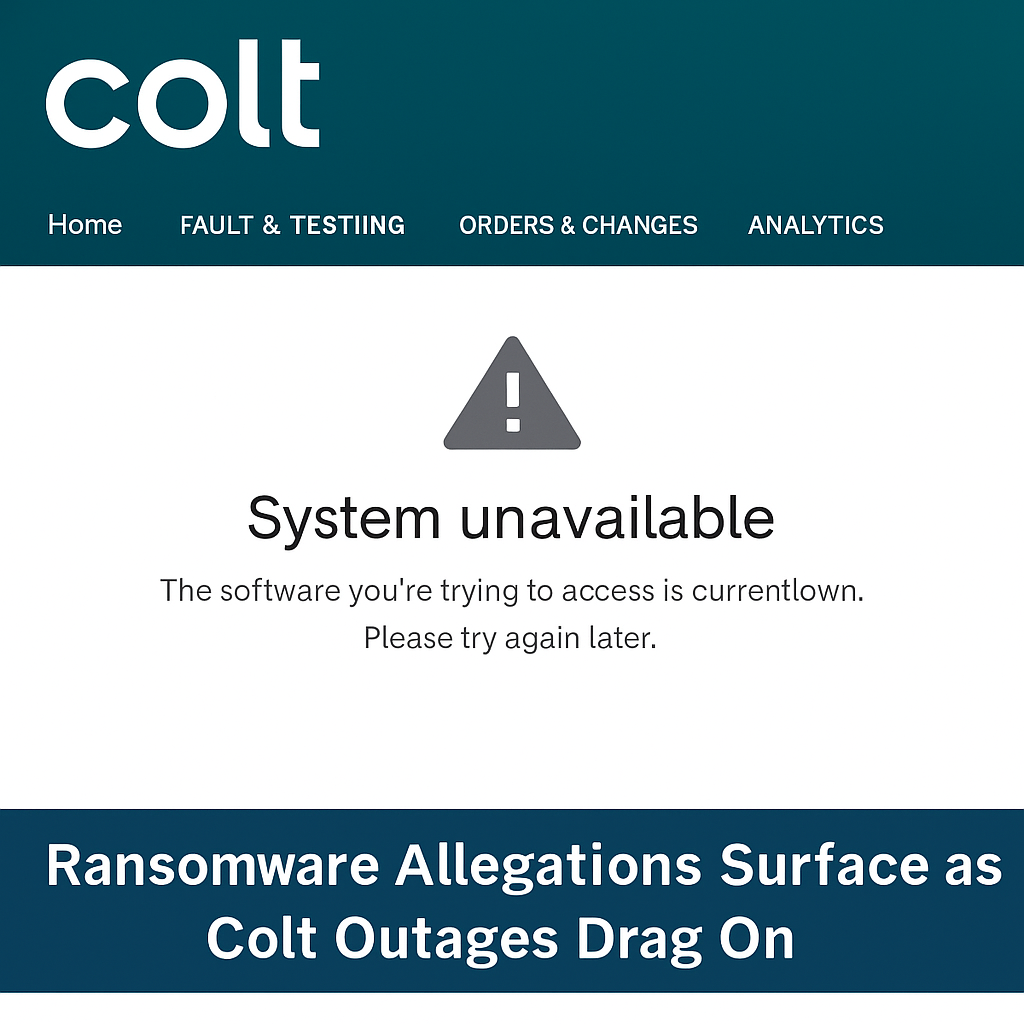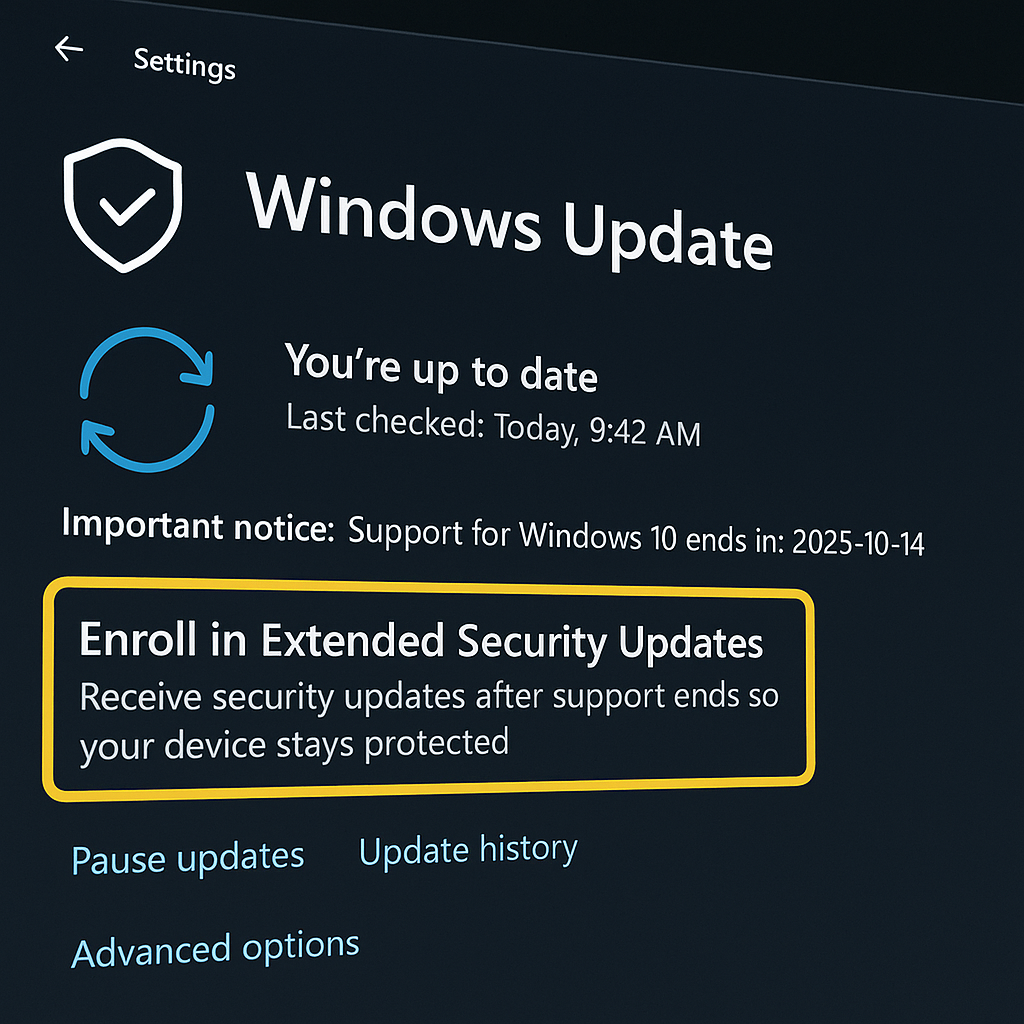ECONOMY
Mass Migration Chaos Erupts in Northern Morocco as Youth Clash with Police

In northern Morocco, tensions have reached a boiling point as young Moroccans engage in violent clashes with police forces, driven by a growing sense of desperation over limited opportunities at home and dreams of a better life abroad. On September 22, 2024, these confrontations intensified, drawing attention to the broader social and economic challenges that have fueled discontent across the country.
Background and Catalysts
The unrest primarily centers around attempts by large groups of young Moroccans to migrate illegally to Spain. These attempts have surged dramatically in recent weeks, particularly in the northern coastal areas closest to Europe. The situation reached a critical point after a wave of social media campaigns encouraged mass illegal migration, painting the journey across the Mediterranean as an achievable goal despite the risks involved.
Morocco has long been a hub for African and Middle Eastern migration towards Europe, but recent events have highlighted a growing trend of young Moroccans themselves attempting to leave. This internal migration phenomenon is fueled by a high unemployment rate, economic stagnation, and a lack of future prospects for many young people.
Clashes and Arrests
The clashes erupted when security forces moved to disperse groups attempting to head for the coastline and catch boats for Spain. Riot police were deployed to key hotspots, particularly around Tangier and Nador, both significant departure points for migrants. During these operations, police arrested over 150 individuals who were reportedly trying to organize illegal crossings.
The clashes saw the youth hurl rocks and other projectiles at police, leading to several injuries on both sides. The authorities responded with tear gas and arrests, but the underlying tension has continued to simmer. For many of these young people, the prospect of migration is not just a desire but a perceived necessity for survival.
Economic Despair Driving Migration
Morocco, despite its relative stability in North Africa, has struggled with high youth unemployment and economic disparities, especially in its northern regions. Many young Moroccans feel left behind by the country’s economic development and see little opportunity for advancement. This economic frustration has only been exacerbated by the recent pandemic and global economic challenges, which have particularly affected sectors like tourism and manufacturing, key pillars of Morocco’s economy.
The allure of Europe, seen as a land of opportunity, has become more potent as economic prospects in Morocco dim. However, the journey across the Mediterranean is perilous. Many who attempt it face the risks of drowning, exploitation by smugglers, or being turned back by European authorities. Yet, for many young Moroccans, these dangers seem worth the risk compared to the bleak outlook at home.
Government Response
The Moroccan government, in response to this wave of migration attempts and the ensuing violence, has pledged to crack down on illegal migration networks. Officials have also urged young Moroccans to remain patient and have faith in the country’s long-term development plans. However, for many of the youth involved in these clashes, such reassurances ring hollow.
In an effort to quell the situation, the authorities have increased their presence in northern regions, but experts warn that without addressing the root causes of the unrest—primarily unemployment and economic stagnation—these efforts may only provide a temporary solution. Migration pressure, particularly among Morocco’s youth, is likely to remain a significant challenge for the foreseeable future.
The Broader Migration Context
Morocco’s role in the larger migration landscape has always been complex. As a transit country for many sub-Saharan Africans attempting to reach Europe, Morocco has, in recent years, strengthened its border controls with the support of the European Union. This has made it more difficult for non-Moroccan migrants to cross into Spain, especially via the Ceuta and Melilla enclaves.
However, the rise in Moroccan nationals themselves attempting to migrate marks a troubling new phase in this migration crisis. The government’s strategy has involved a mix of crackdowns on smugglers and increased patrols along the coastline, but this does not address the core issue: a generation of young people who feel abandoned by their own country.
Looking Forward
As northern Morocco remains a flashpoint for these tensions, it is clear that a more comprehensive strategy is needed to address the root causes of youth unrest and migration. Without significant economic reforms, investment in job creation, and efforts to engage young people in their own futures, the cycles of frustration and violence may continue.
The international community, particularly Europe, also faces a challenge in balancing its desire to curb illegal migration with the necessity of supporting economic development in countries like Morocco. Long-term solutions will likely require collaboration between Morocco and its European partners, focusing not just on border security but also on addressing the economic disparities driving migration.
For now, the streets of northern Morocco remain tense as young people continue to clash with police, risking everything in the hopes of a new life across the sea.
This escalating situation serves as a stark reminder of the ongoing struggles many nations face in balancing economic growth, migration pressures, and social stability(HESPRESS English Morocco News).
business
From Potatoes to Paleontology: Morocco’s Big Wins on August 14, 2025
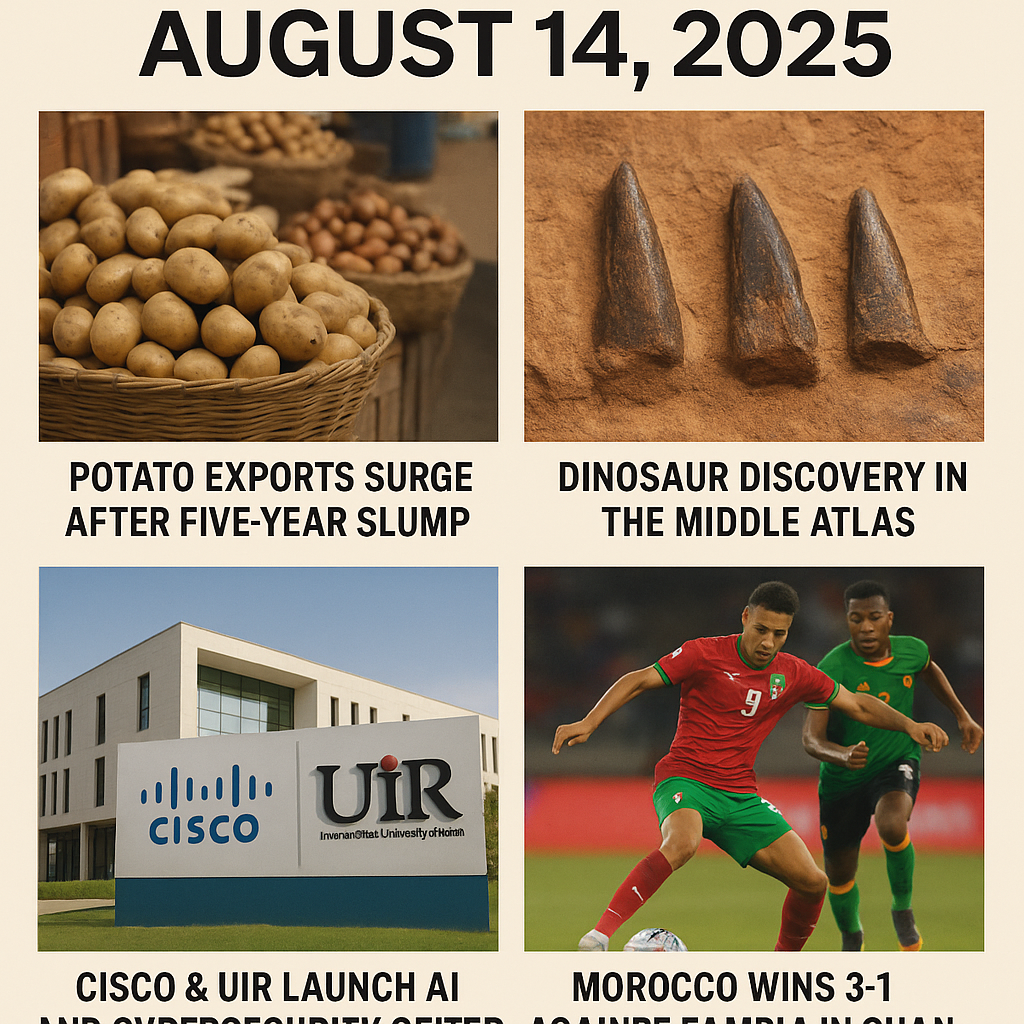
From potatoes to paleontology, Morocco posts gains across economy, science, and sport, while DV-2025 visa delays put pressure on applicants.
Morocco’s potato exports surged after a five-year slump, paleontologists uncovered the country’s oldest Turiasaurian teeth in the Middle Atlas, and UIR teamed with Cisco on a new AI & cybersecurity center. Authorities also approved the Amazigh name “Massinissa,” Morocco beat Zambia 3–1 at CHAN, and DV-2025 lottery winners sounded alarms over stalled interviews. FreshPlazaMorocco World News+3Morocco World News+3Morocco World News+3Hespress
The Briefing
Morocco’s news cycle on August 14, 2025 offered a snapshot of a country diversifying—export recovery in agri-food, frontier science with Jurassic-era finds, digital capacity-building through a new AI/cyber hub, and a culture-rights win on Amazigh naming—rounded off by a CHAN victory and visa-processing anxieties for DV-2025 winners. FreshPlazaMorocco World News+3Morocco World News+3Morocco World News+3Hespress
Economy — Potatoes Are Back
After five years of decline, Morocco’s ware-potato exports rebounded to 42,900 tons worth US$14.9 million between July 2024 and May 2025—a 5.7× increase versus the prior season. Analysts credit renewed West African trade links and firmer European demand. The uptick helps farmers and cold-chain logistics while testing resilience ahead of the 2025–26 campaign. FreshPlaza
Explainer takeaway: A stronger potato campaign increases rural incomes and stabilizes supply chains; monitoring fertilizer prices, shipping rates, and weather will indicate whether the rebound is durable.
Science — 160-Million-Year-Old Giants
Researchers identified three dinosaur teeth from the Middle Atlas (El Mers III Formation), marking the oldest evidence of Turiasauria on mainland Africa—a Middle Jurassic lineage previously best known from Iberia. The peer-reviewed study tightens biogeographic links between North Africa and Europe and invites fresh fieldwork in Boulemane province. Morocco World NewsYabiladiResearchGate
Explainer takeaway: Morocco’s Jurassic strata continue to fill global fossil gaps, boosting scientific tourism and training opportunities for local geoscience programs.
Technology — UIR × Cisco Unveil AI & Cybersecurity Center
The International University of Rabat (UIR) and Cisco signed an MoU to create a Cisco EDGE Incubation Center focused on AI and cybersecurity, aligning with Morocco’s Digital 2030 ambitions. The hub aims to link academia, startups, and public services while leveraging Cisco Networking Academy pathways. Morocco World NewsMap NewsMedafrica TimesLinkedIn
Explainer takeaway: Expect new pipelines for SOC talent, secure-cloud skills, and AI safety research—areas where Morocco seeks digital sovereignty and exportable know-how.
Society — A Win for Amazigh Naming Rights
Following an initial refusal, Meknes authorities approved the Amazigh name “Massinissa.” The reversal reflects ongoing normalization of Amazigh names in civil registry practice and reduces administrative friction for families seeking culturally rooted identities. Morocco World NewsHespressFacebook
Explainer takeaway: Documentation shapes access to education, healthcare, and travel; clearer acceptance of Amazigh names streamlines everyday life and affirms linguistic rights.
Sport — CHAN Boost: Morocco 3–1 Zambia
Morocco’s locally based national team defeated Zambia 3–1, strengthening its CHAN 2024 (played in 2025) campaign and securing a quarterfinal berth. Wins at CHAN raise player visibility, support domestic leagues, and can lift transfer valuations for homegrown talent. Hespress
Explainer takeaway: CHAN is a showcase for domestic football systems; Morocco’s result supports the broader talent pipeline from Botola clubs to continental competition.
Migration — DV-2025 Interview Delays
DV-2025 lottery winners in Morocco report stalled interview scheduling at the U.S. Consulate in Casablanca as the September 30, 2025 fiscal-year deadline nears, raising fears that selectees could time out despite “current” case numbers. Civil-society calls urge transparent scheduling and capacity updates. Morocco World News
Explainer takeaway: Diversity Visas are time-bound; absent appointments by the end of the fiscal year, eligibility ends—even for qualified selectees. Applicants should ensure DS-260s are complete and monitor consular notices.
What to Watch Next
- Agri-exports: Does the potato rally carry into Q4 logistics and pricing? FreshPlaza
- Science & tourism: Will new Middle Atlas digs expand fossil trails and museum programs? Morocco World News
- Talent & tech: Can the UIR–Cisco hub seed startups and feed national SOC capacity by 2026? Morocco World News
- Civil registry: Are further Amazigh naming cases resolved consistently across regions? Hespress
- CHAN: Injury management and fatigue as fixtures compress. Hespress
- DV-2025: Any scheduling updates from Casablanca before Sept. 30. Morocco World News
business
Bitcoin’s $121K Breakout Signals a New Era of Institutional Adoption

Historic rally fueled by ETF inflows, subdued volatility, and record-high confidence from major investors.
In a landmark moment for the cryptocurrency market, Bitcoin has shattered the $121,000 barrier, trading at approximately $121,281 USD as of Sunday afternoon, according to Binance data. The surge underscores the asset’s resilience and growing role in global finance, even as volatility remains strikingly subdued.
This latest climb follows the digital currency’s record high on July 14, 2025, when it first crossed the $121,000 threshold, with some exchanges recording peaks as high as $122,800 (StartupNews.fyi). Analysts note that the market’s ability to sustain such lofty levels reflects both deep-pocketed institutional confidence and a shift in the psychology of investors.
Institutional Muscle Behind the Rally
Driving the uptrend are massive inflows into spot Bitcoin exchange-traded funds (ETFs), now considered a cornerstone for mainstream adoption. According to Crypto Briefing and CoinDesk, these regulated investment vehicles have drawn billions of dollars from pension funds, hedge funds, and family offices seeking exposure to Bitcoin without the complexities of direct custody.
“ETF inflows are not just providing liquidity—they’re changing the composition of Bitcoin’s investor base,” explained Daniel Meyer, senior strategist at CoinCentral. “We’re seeing less speculative churn and more long-term positioning, which stabilizes the market.”
Volatility Compresses as Market Matures
Remarkably, the surge comes amid record compression in implied volatility—a measure of expected future price swings. Traditionally, sharp rallies in Bitcoin have been accompanied by wild fluctuations, but this cycle is different.
Data from CryptoRank shows that volatility levels are hovering near multi-month lows, hinting at a more stable price discovery process. “It’s unusual and indicative of a maturing asset class,” said Alexandra Perez, head of digital asset research at Moomoo.
Human Impact and Global Significance
For long-term holders like MicroStrategy, which controls roughly 3% of the total Bitcoin supply valued at an estimated $74 billion (AInvest), the latest rally is a vindication of years of accumulation.
“This isn’t just about price—it’s about credibility,” said Michael Saylor, MicroStrategy’s executive chairman, in a recent investor briefing. “Bitcoin is becoming an institutional-grade reserve asset.”
In Argentina, where hyperinflation continues to erode the peso, the surge reinforces Bitcoin’s status as a financial lifeline. Local adoption rates are among the highest in Latin America, with millions using Bitcoin for savings and remittances.
Looking Ahead
While the sentiment remains bullish, analysts caution against complacency. “The compressed volatility could precede a breakout—either higher or lower,” warned Binance market analyst Leo Zhang. “Key resistance at $123,000 will be the next battleground.”
With institutional demand strong, regulatory clarity improving, and geopolitical tensions driving interest in alternative stores of value, Bitcoin’s role in the global financial system appears set to deepen.
business
Algerian Youth Left in Limbo by New Drug Test Requirement for Employment

New anti‑drug hiring rule touted as moral reform masks regulatory gaps and risks deepening exclusion of young Algerian jobseekers
ALGIERS — In the tense hours after candidates queued outside recruitment centers, a quiet panic spread—not over exam scores, but uncertainty. Without official guidance, aspirants unsure whether to submit to compulsory drug tests found their career hopes hanging in limbo.
This administrative confusion stems from a law published on 13 July 2025 in the Journal officiel (No. 43), which mandates that job applicants—both in public service and private sector roles—present a negative drug test to be considered for employment.
Though framed as a means to moralize the labor market, the new requirement has left candidates, officials, and legal experts scrambling. The Direction Générale de la Fonction Publique, which should oversee implementation, admits no regulations or guidelines have been issued. It has shifted responsibility to the Ministry of Justice, deepening procedural uncertainty.
“In principle, this is about professionalism and safety. In reality, it’s a move fraught with legal and ethical risks,” says Farah Mansouri, a labor rights advocate based in Oran. “Without clear protocols, many qualified graduates stand to be unfairly excluded.”
Human Toll Amid Legal Silence
For Algeria’s growing cohort of unemployed youth—especially university graduates—the measure feels like yet another hurdle. Among them is *Amine, a 24-year-old from Constantine, who prepared for a highly competitive exam only to be turned away.
“They told me I needed to submit a test, but I wasn’t given details. I couldn’t afford private clinics, and local hospitals don’t even have certificates ready,” he recounts.
A Measure in Search of Structure
Introduced as part of a broader law ramping up penalties against narcotic trafficking and usage, the drug test rule has been criticized as more symbolic than systematically grounded. Observers question the absence of provisions protecting personal medical data, ensuring test accuracy, or even specifying official testing centers.
Legally, veterans of employment rights and administrative law note the dangerous precedent of imposing conditions with no roadmap for compliance.
Context & Broader Significance
This development unfolds in a broader Algerian context marked by rising authoritarianism and restricted civic spaces. Measures purportedly aimed at protection or security are increasingly viewed as tools of social control.
Rather than investing in prevention, support systems, or rehabilitation services, the state appears to favor exclusionary tactics—compounding the frustration of youth already navigating economic instability.
Source: Maroc Diplomatique
-

 data breaches7 days ago
data breaches7 days agoALERT – Stop What You’re Doing & Update WinRAR Now
-

 data breaches5 days ago
data breaches5 days agoHackers Claim Full Network Takeover at Royal Enfield
-

 data breaches1 week ago
data breaches1 week agoLeaked Logins Are the New Zero-Days—Here’s How Attackers Exploit Them
-

 data breaches6 days ago
data breaches6 days agoFrom VPN to FortiManager: Attack Pattern Suggests Preparation for New Exploit
-
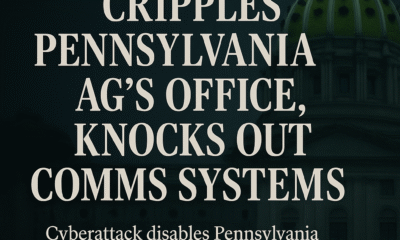
 data breaches4 days ago
data breaches4 days agoPennsylvania AG’s Website, Email Taken Down in Security Incident
-
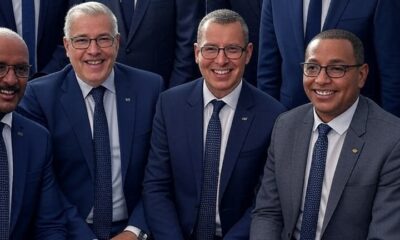
 International7 days ago
International7 days agoFrom Rabat to the Sahel: Moroccan Builders Lead Africa’s Largest Road Project
-

 International1 week ago
International1 week agoEspionage in the Maghreb: Algerian-Spanish Deal to Counter Morocco Unearthed
-
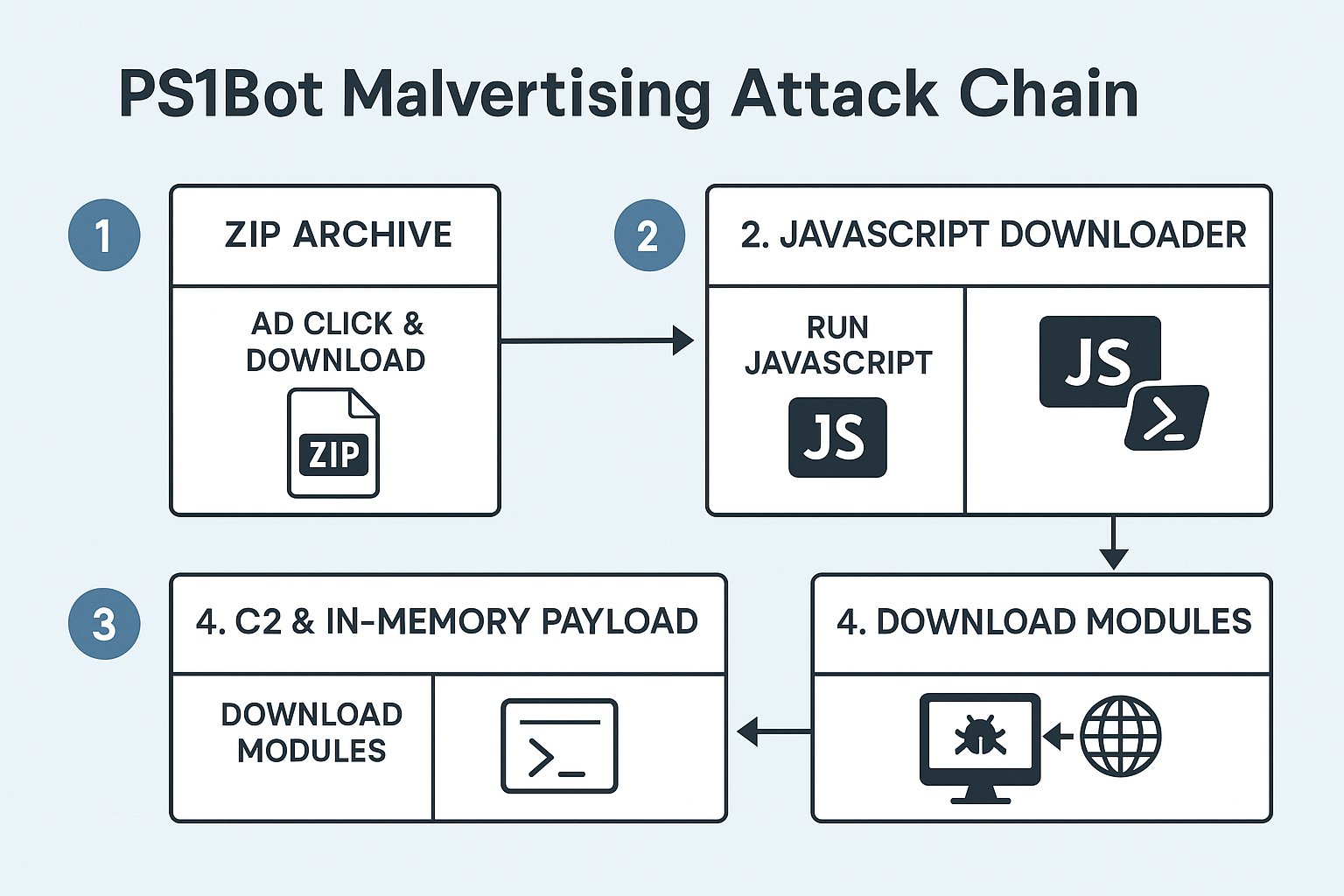
 data breaches5 days ago
data breaches5 days agoNew PS1Bot Malware Uses Fileless PowerShell for Data Theft


